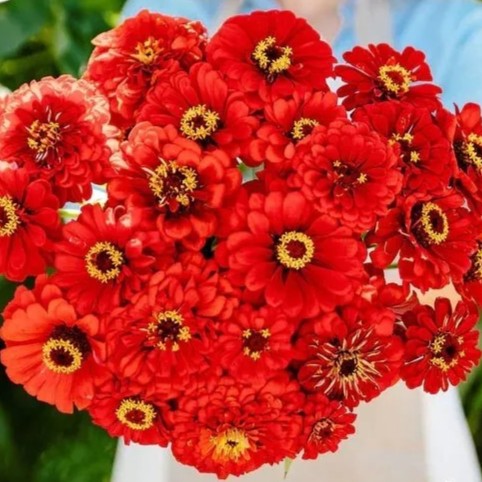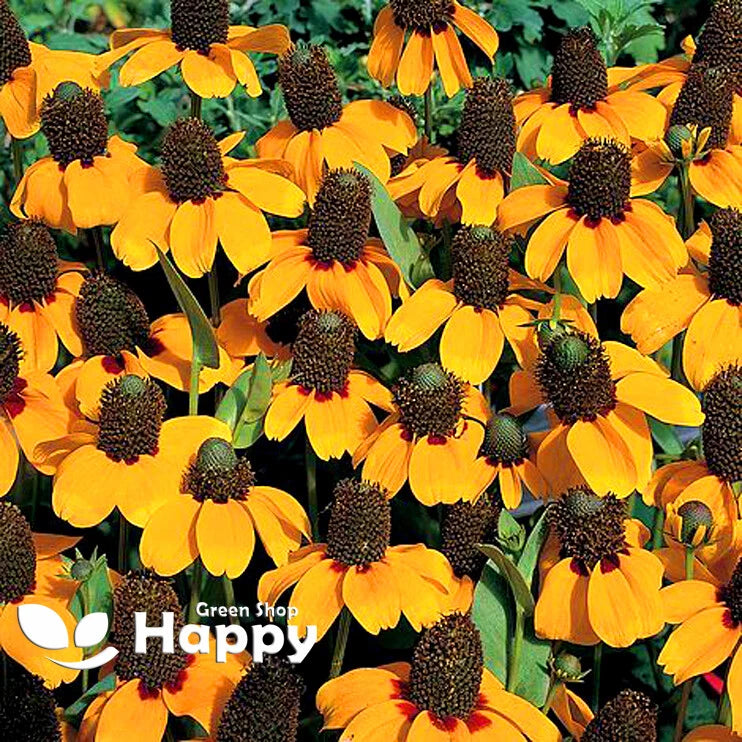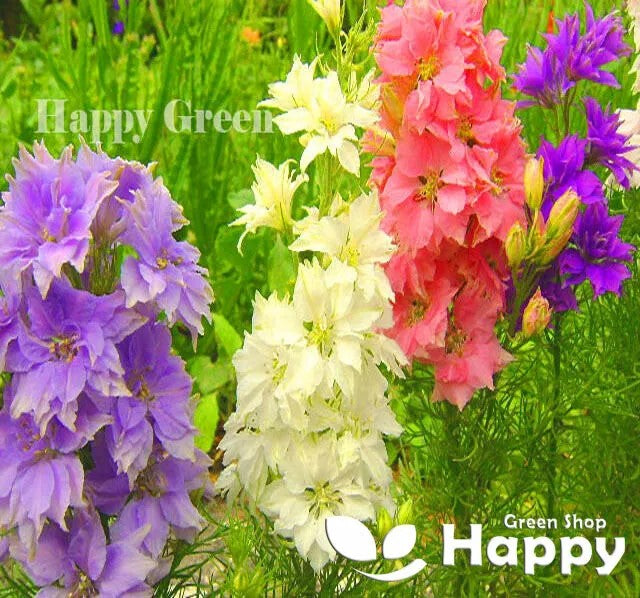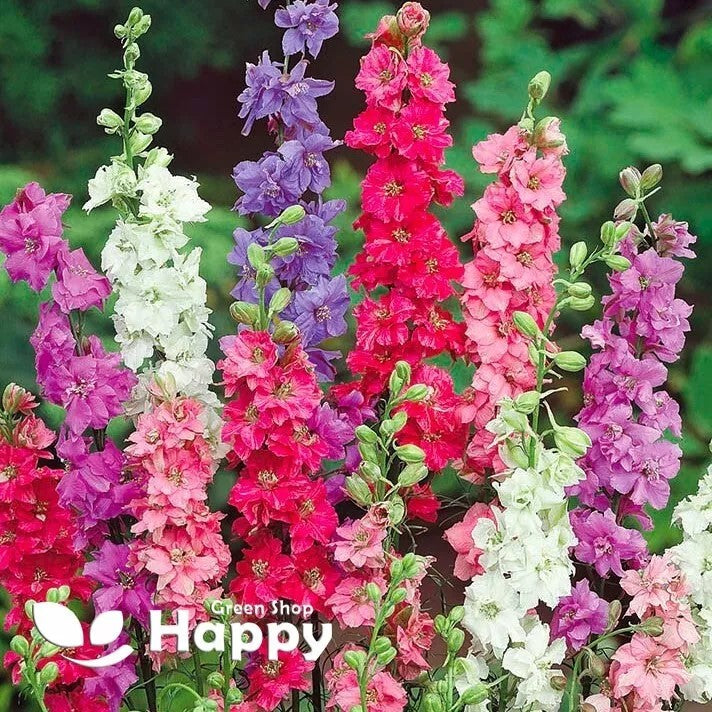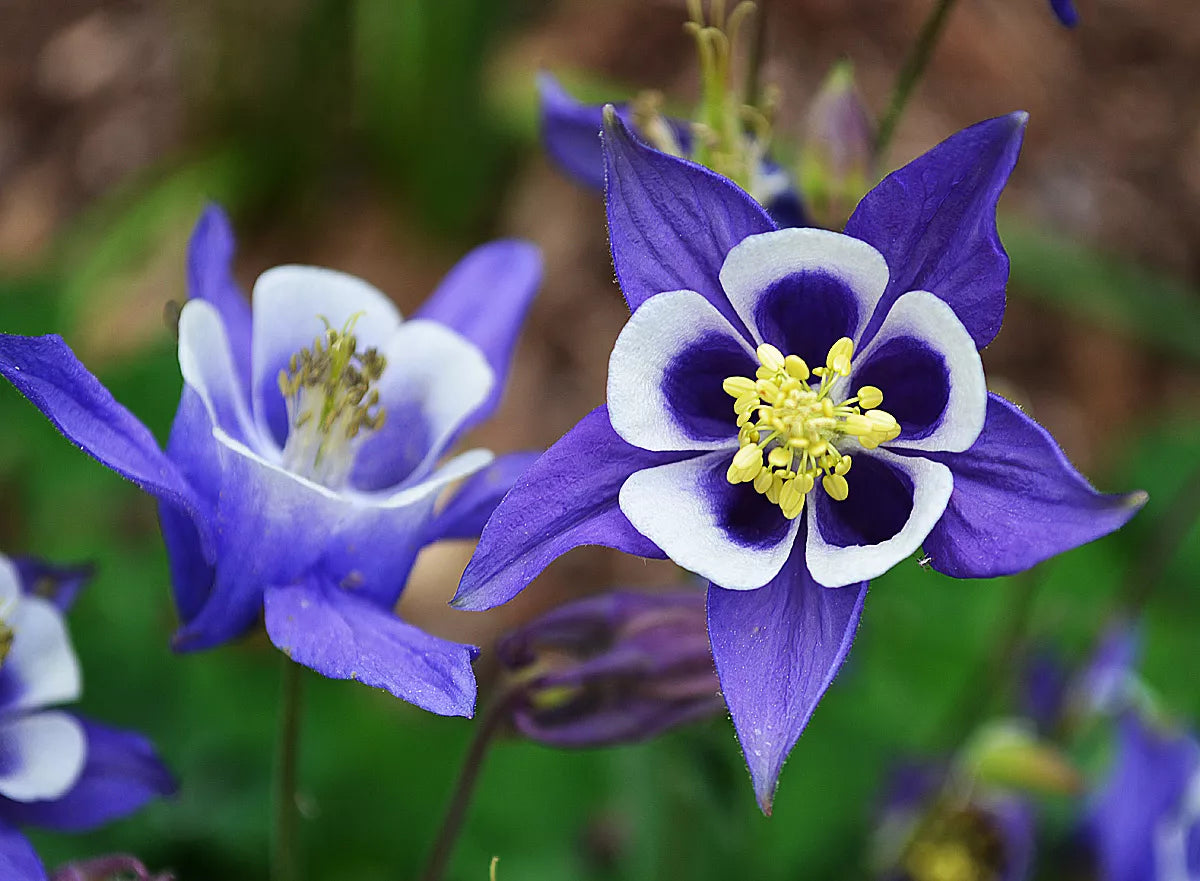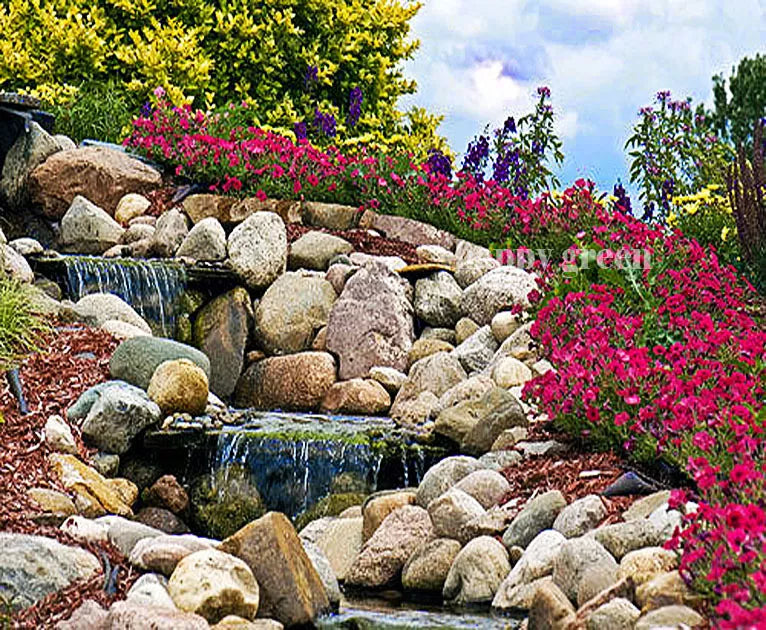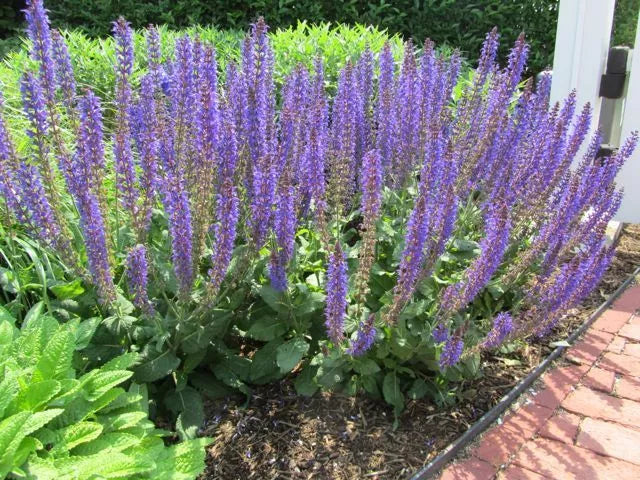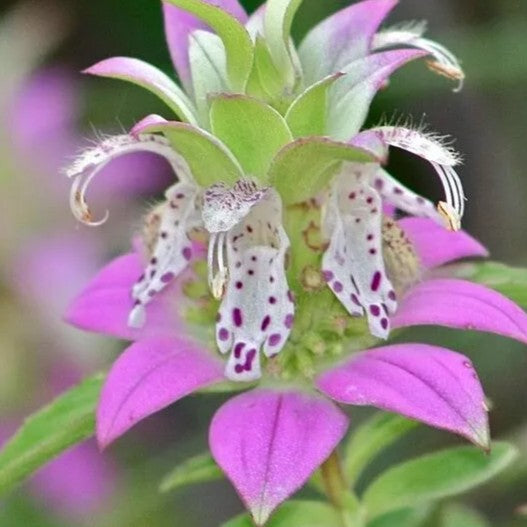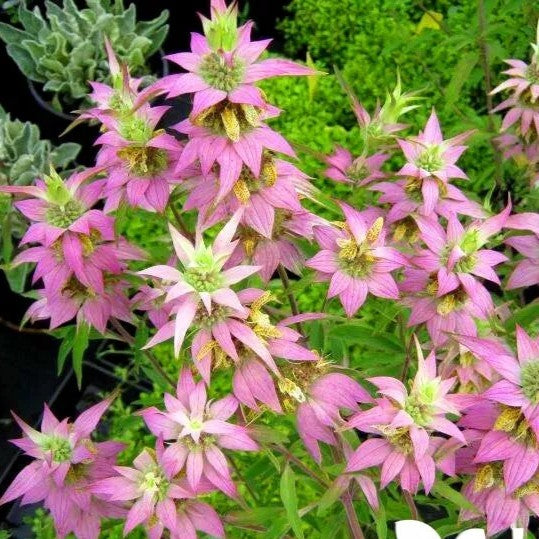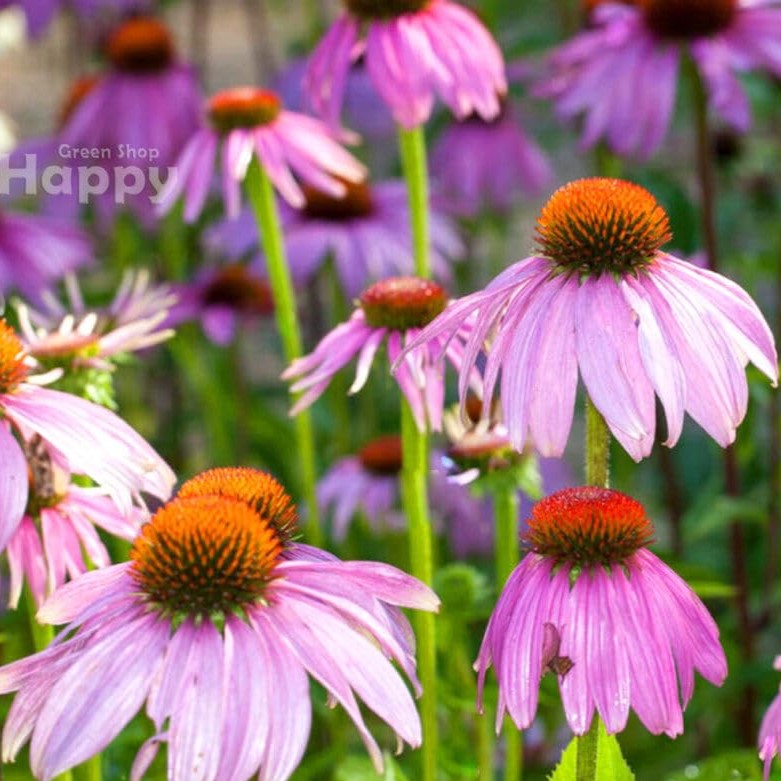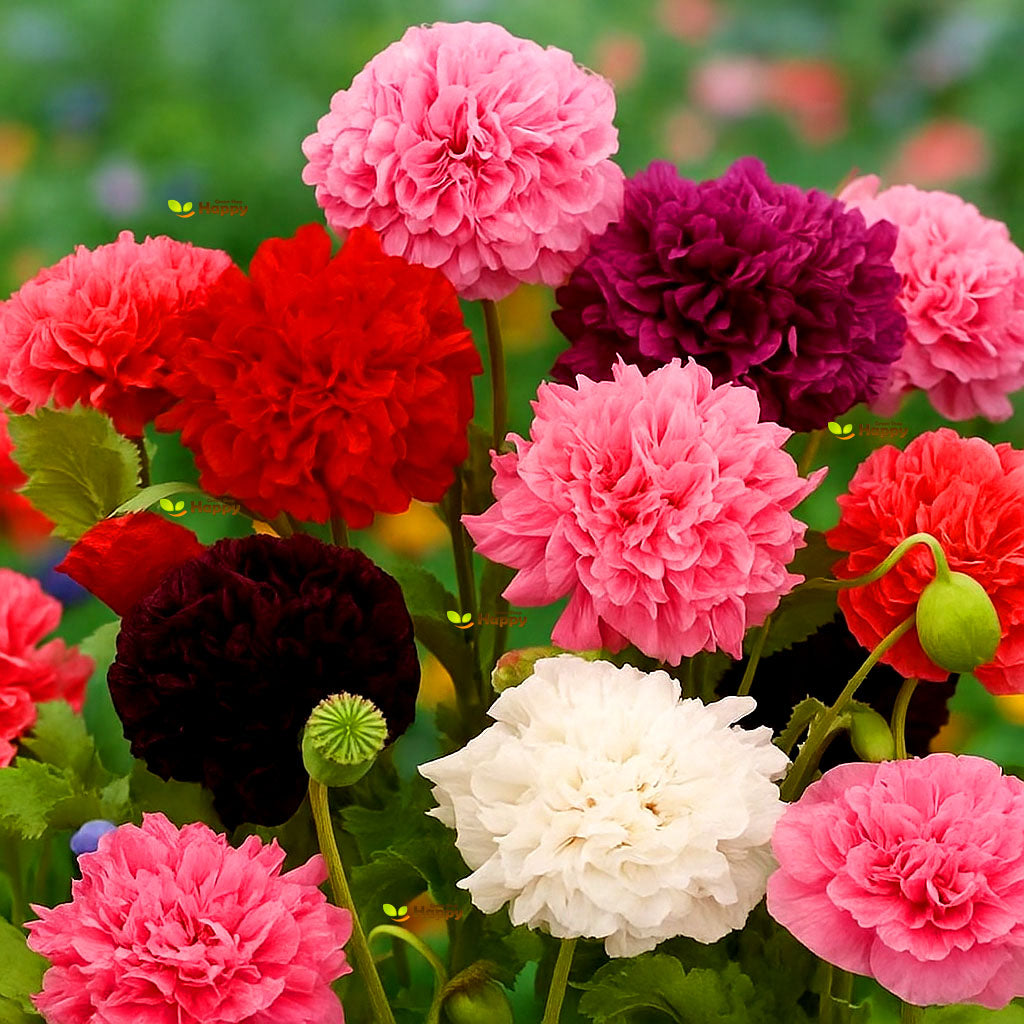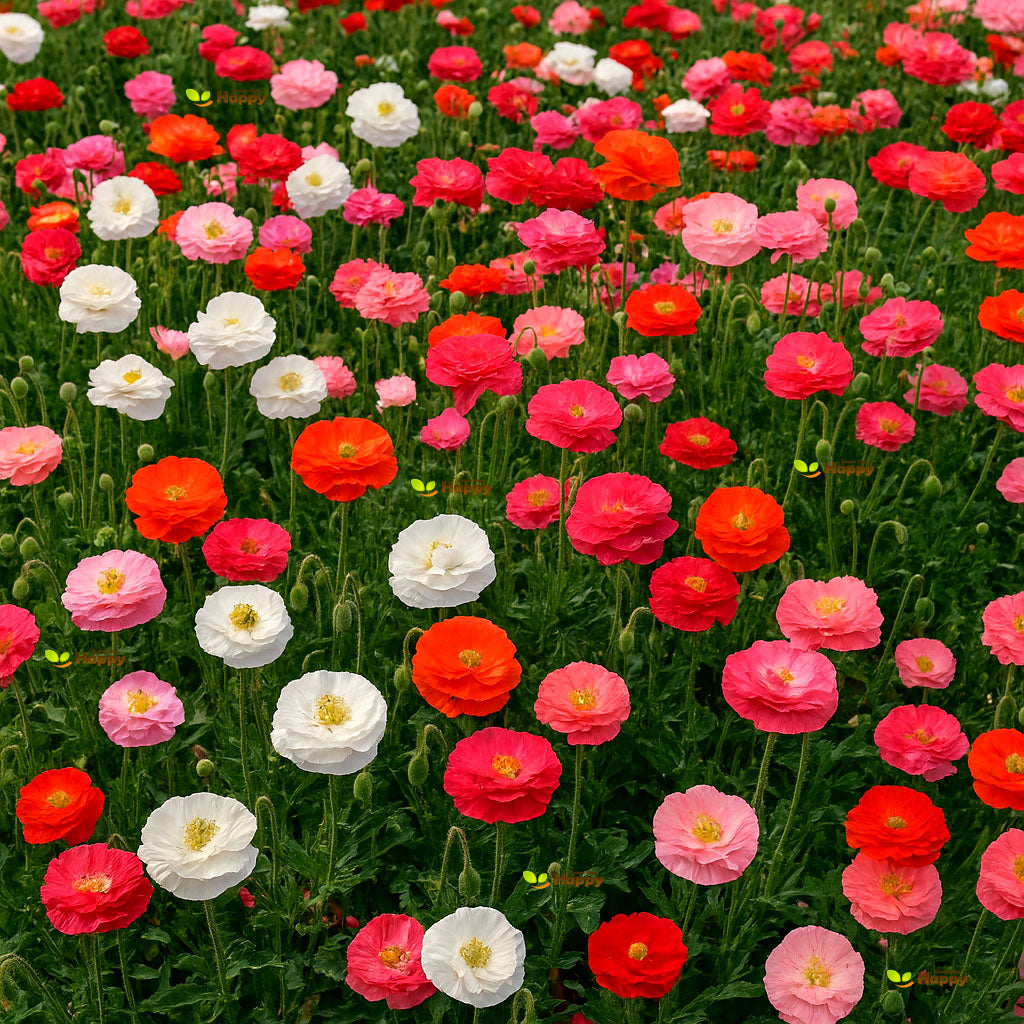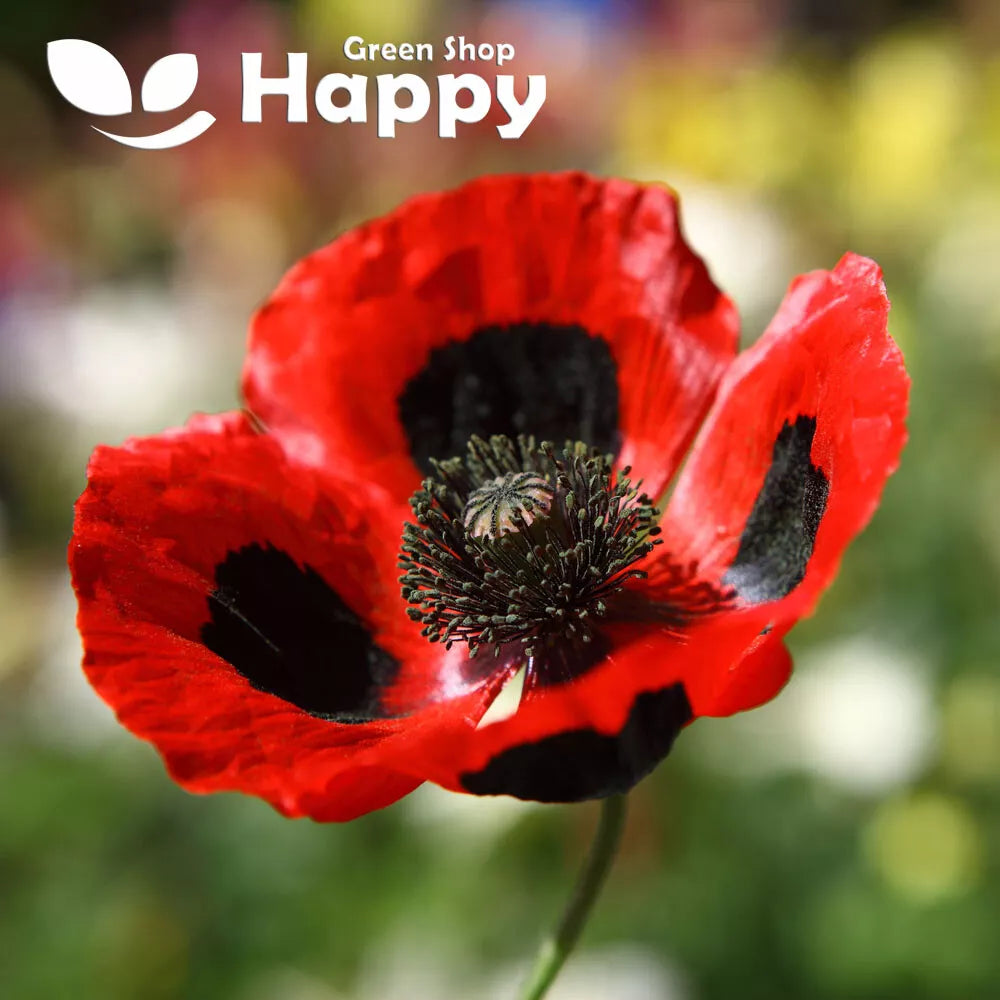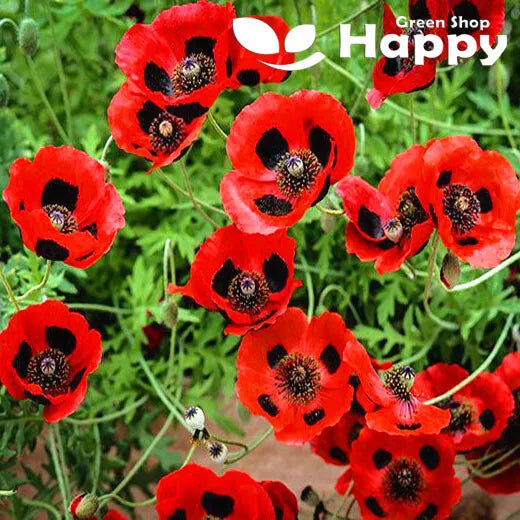Sort by:
128 products
128 products
Rudbeckia ‘Clasping Coneflower’ – Seeds (Rudbeckia amplexicaulis)
The Clasping Coneflower is a hardy annual Rudbeckia that produces masses of golden-yellow petals marked with dark reddish-brown centers. With its long flowering season and striking daisy-like blooms, it’s ideal for brightening borders, meadows, and wildflower gardens. Heat- and drought-tolerant, it thrives in poor soils and attracts bees and butterflies.
Why Grow Clasping Coneflower?
-
Bright golden-yellow flowers with dark centers
-
Long flowering season, summer into autumn
-
Attracts pollinators
-
Easy to grow, drought-tolerant
Key Features
-
Type: Hardy annual
-
Height: 60–90 cm
-
Flowering: June–September
-
Position: Full sun, well-drained soil
-
Uses: Borders, meadows, wildflower gardens, cut flowers
Ideal For
-
Naturalistic and wildflower plantings
-
Low-maintenance garden borders
-
Pollinator-friendly spaces
Sowing & Growing
-
Sow outdoors: April–June directly into prepared soil
-
Germination: 10–20 days at 18–22°C
-
Thin seedlings to 20–30 cm apart
-
Deadhead for prolonged flowering
Rocket Larkspur Mix – Seeds (Delphinium ajacis)
The Rocket Larkspur Mix is a stunning annual that brings tall, elegant spikes of pink, blue, lavender, purple, and white blooms to the summer garden. A cottage garden classic, this mix produces stately flower spires that make a striking vertical accent in beds, borders, and cutting gardens. Its graceful flowers also make excellent, long-lasting cut blooms for fresh or dried arrangements.
Highlights
-
Tall, upright spires with a vibrant color mix
-
Cottage garden favorite with delicate, airy blooms
-
Excellent cut flower for bouquets and arrangements
-
Hardy annual – easy to grow and maintain
-
Attracts pollinators
Key Features
-
Botanical Name: Delphinium ajacis
-
Variety: Rocket Larkspur Mix
-
Seed Count: [Specify count if available]
-
Height/Spread: 75–120 cm tall, 30–40 cm spread
-
Position: Full sun, well-drained soil
-
Flowering Period: June – August
Perfect For
-
Cottage gardens and borders
-
Tall accents in mixed beds
-
Cutting gardens (fresh & dried flowers)
-
Pollinator-friendly landscapes
Sowing Instructions
-
Sow outdoors March–May or August–September for overwintering
-
Scatter thinly in prepared soil, cover lightly with soil
-
Germination: 14–28 days
-
Thin seedlings to 25–30 cm apart
-
Stake taller plants if needed for support
Rocket Larkspur Mix – Seeds (Delphinium consolida)
The Rocket Larkspur Mix is a tall, elegant annual producing spires of delicate flowers in shades of pink, purple, lavender, and white. Perfect for cottage gardens, borders, and cutting gardens, these plants bring vertical interest and charm while also providing excellent flowers for fresh or dried arrangements.
What Makes It Special
-
Tall, graceful flower spikes with a mix of soft, vibrant colors
-
Long-lasting blooms suitable for cutting
-
Cottage garden favorite with classic charm
-
Attracts pollinators and adds vertical interest
Key Features
-
Botanical name: Delphinium consolida
-
Variety: Rocket Larkspur Mix
-
Seed count: Approx. 300 seeds per pack
-
Height/Spread: 75–120 cm tall, 25–35 cm spread
-
Position: Full sun, fertile, well-drained soil
-
Flowering period: Early to late summer
Ideal For
-
Cottage gardens and classic borders
-
Cutting gardens for fresh or dried flowers
-
Pollinator-friendly plantings
-
Adding vertical accents in mixed beds
Sowing Instructions
-
When to sow: March–May or August–September outdoors
-
How to sow:
-
Scatter seeds thinly on prepared soil
-
Cover lightly with soil
-
Germination: 14–28 days
-
-
After germination:
-
Thin seedlings to 20–30 cm apart
-
Stake taller plants if grown in exposed sites
-
Rockery Garden Mixed Flower Seeds – 0.5 g
Bring charm and color to your rock garden with this delightful Rockery Garden Flower Mix. Specially selected compact, hardy flowers thrive in sunny, well-drained spots and fill rockeries, borders, and containers with continuous blooms all summer.
Why Grow "Rockery Garden Mix"
-
Low-growing, compact habit – perfect for rockeries
-
Vibrant color palette for a natural look
-
Drought-tolerant once established
-
Easy to grow and low-maintenance
Key Features
-
Type: Annual & perennial mix
-
Height: 15–30 cm
-
Flowering: June–September
-
Position: Full sun, well-drained soil
-
Uses: Rock gardens, borders, edging, containers
Ideal For
-
Rockeries & alpine gardens
-
Cottage-style plantings
-
Pollinator-friendly garden spots
-
Easy summer color with little effort
Sowing & Growing
-
Sow outdoors: April–May in prepared soil
-
Scatter thinly, cover lightly with soil
-
Germination: 14–21 days
-
Water lightly until established
-
Flowers from early summer onwards
Purplish Lilac Lemon Bee Balm Mint Seeds (Monarda punctata)
Bring a fragrant and colorful touch to your garden with Purplish Lilac Lemon Bee Balm Mint. This striking perennial produces spiky clusters of lilac-purple flowers with lemon-scented foliage, attracting bees, butterflies, and other pollinators. Easy to grow and drought-tolerant, it adds both beauty and ecological value to borders, beds, and wildflower gardens.
Why Grow "Purplish Lilac Lemon"
-
Unique lilac-purple flower spikes with lemon-scented foliage
-
Attracts pollinators like bees and butterflies
-
Drought-tolerant and easy to grow
-
Adds color and texture to borders, beds, and wildflower gardens
Key Features
-
Type: Perennial (Monarda punctata)
-
Height: 60–90 cm
-
Flowering: Summer (June–September)
-
Position: Full sun to partial shade
-
Uses: Borders, flower beds, pollinator gardens, containers
Sowing & Growing
-
Sow indoors: 6–8 weeks before the last frost
-
Sow outdoors: After frost danger has passed
-
Germination: 10–20 days
-
Space seedlings: 30–40 cm apart
-
Prefers well-drained soil and full sun for best flowering
Purple Coneflower 'Starlight' – Seeds
(Echinacea purpurea)
Purple Coneflower 'Starlight' is a hardy perennial known for its striking lavender-purple petals surrounding a prominent orange-brown central cone. Its long-lasting blooms attract pollinators like bees and butterflies, while its robust, upright growth makes it a standout in borders, wildflower meadows, and perennial gardens. This variety is low-maintenance and drought-tolerant, perfect for sustainable planting.
Key Features
-
Type: Perennial
-
Height: 60–90 cm
-
Spread: 40–50 cm
-
Flowering: July–September
-
Position: Full sun to partial shade
-
Soil: Well-drained, moderately fertile
Ideal For
-
Perennial borders and cottage gardens
-
Pollinator-friendly planting
-
Cut flower arrangements
-
Naturalized or meadow-style gardens
Sowing & Growing
-
Sow indoors: February–April at 18–22°C
-
Sow outdoors: April–May, directly in soil
-
Germination: 14–21 days
-
Thin seedlings to 40–50 cm apart
-
Mulch and water moderately; low-maintenance once established
Pot Marigold Dwarf ‘Sunset Buff’ – Apricot – 1,000 Seeds (Calendula officinalis)
The Dwarf Pot Marigold ‘Sunset Buff’ is a charming, compact variety producing apricot-peach blooms with soft golden undertones. Its warm pastel shades bring a unique elegance to beds, borders, and cottage gardens. Easy to grow and long-flowering, this hardy annual is also edible, with petals traditionally used to decorate salads or for natural dye.
Highlights
-
Distinctive apricot–buff blooms with golden tones
-
Compact, dwarf habit – perfect for pots and borders
-
Long flowering season from early summer to autumn
-
Attracts pollinators and beneficial insects
-
Edible petals for salads and herbal uses
Key Features
-
Botanical Name: Calendula officinalis
-
Variety: Dwarf ‘Sunset Buff’ (Apricot)
-
Seed Count: 1,000 seeds per pack
-
Height/Spread: 25–30 cm tall, compact growth
-
Position: Full sun, well-drained soil
-
Flowering Period: June – October
Perfect For
-
Bedding, borders, and cottage gardens
-
Patio pots and containers
-
Pollinator-friendly gardens
-
Edible flower displays and herbal uses
Sowing Instructions
-
Sow outdoors March–May or August–September for overwintering
-
Sow directly into soil, lightly cover seeds
-
Germination: 7–14 days
-
Thin seedlings to 20–25 cm apart
-
Deadhead regularly for prolonged flowering
Poppy Shirley Double Mix – Seeds
(Papaver rhoeas)
Poppy Shirley Double Mix is a charming annual that produces masses of fully double, ruffled blooms in soft pastel shades of pink, coral, and white. Known for its delicate, romantic appearance, this variety adds a touch of elegance to cottage gardens, borders, and wildflower meadows. Long-lasting and easy to grow, it also makes a delightful cut flower.
Why Grow Poppy Shirley Double Mix?
-
Fully double, ruffled blooms in soft pastel colors
-
Hardy and easy to grow annual
-
Ideal for naturalistic planting or cut flowers
-
Attracts pollinators, bees, and butterflies
Key Features
-
Type: Hardy annual
-
Height: 50–70 cm
-
Flowers: Late spring to summer
-
Position: Full sun
-
Soil: Well-drained, moderately fertile
Ideal For
-
Cottage gardens and wildflower borders
-
Cutting gardens for bouquets
-
Pollinator-friendly gardens
-
Naturalized planting schemes
Sowing & Growing
-
Sow outdoors: March–May or September–October directly in prepared soil
-
Lightly cover seeds and keep soil moist
-
Germination: 14–21 days
-
Thin seedlings to 20–25 cm apart
-
Care: Deadhead to extend flowering or allow self-seeding for next season
Poppy 'Ladybird' – 3000 Seeds (Papaver commutatum)
Add drama and charm to your garden with Poppy 'Ladybird'. This eye-catching variety produces vivid scarlet-red blooms each marked with a bold black blotch at the base of every petal, reminiscent of a ladybird’s spots. Compact and easy to grow, it creates a striking display in beds, borders, and wildflower plantings.
Why Grow 'Ladybird'
-
Striking scarlet-red flowers with black blotches
-
Compact and easy to grow
-
Long flowering season
-
Attracts bees and pollinators
Key Features
-
Type: Hardy annual (Papaver commutatum)
-
Height: 30–45 cm
-
Flowering: June–August
-
Position: Full sun
-
Uses: Borders, wildflower meadows, pollinator gardens
Ideal For
-
Cottage and wildflower gardens
-
Adding bold splashes of color
-
Naturalizing in meadows or borders
-
Wildlife-friendly plantings
Sowing & Growing
-
Sow outdoors: March–May or September–October
-
Sow thinly in prepared soil, cover lightly
-
Germination: 10–20 days
-
Thin seedlings to 15–20 cm apart
-
Prefers poor, well-drained soil in full sun
Showing 54/128


